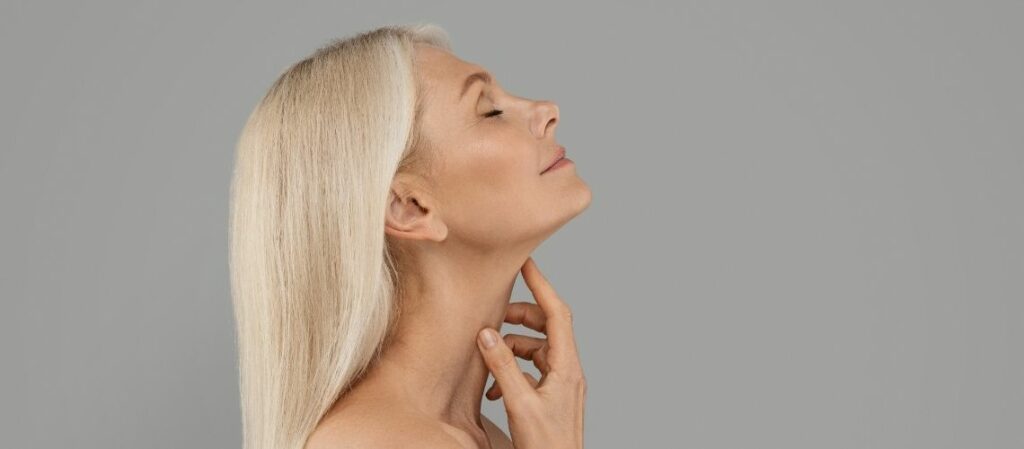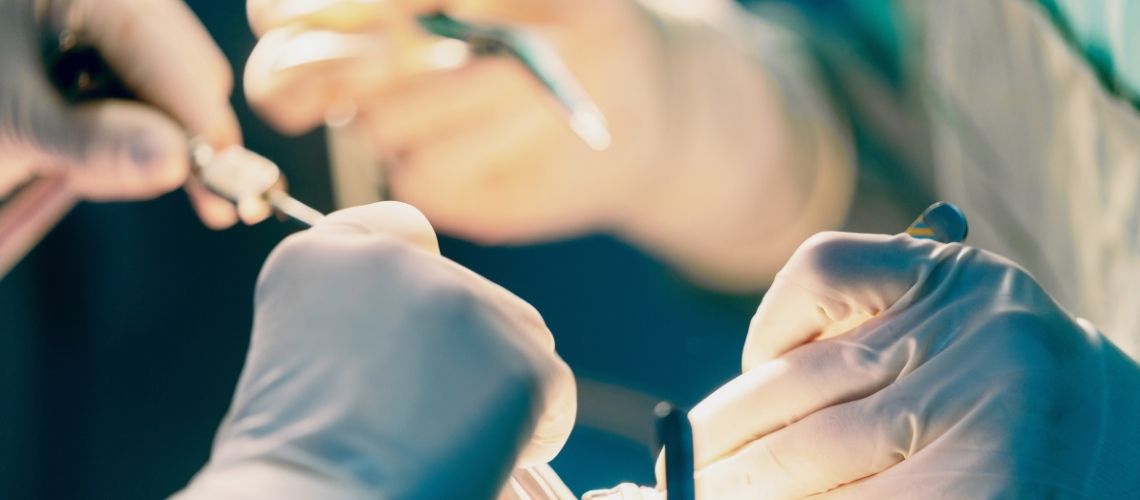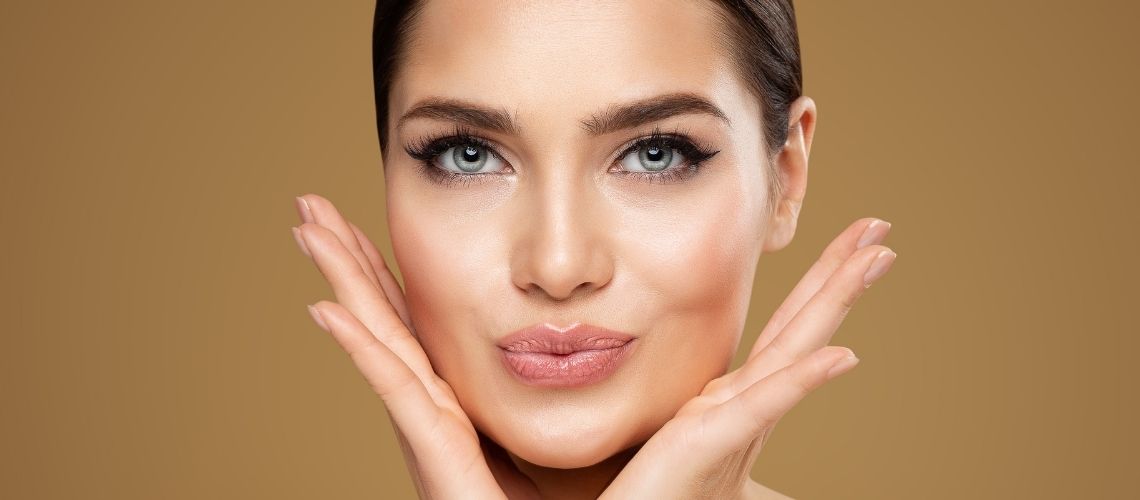Rhinoplasty and chin implant surgery are often combined to improve facial profile balance. Adjusting both the nose and chin creates a proportional and aesthetically pleasing appearance.
A weak chin can exaggerate the size of the nose. By augmenting the chin while refining the nose, surgeons achieve a more harmonious profile without over-altering either feature.
This dual procedure is tailored to the patient’s facial anatomy. Customized implants and rhinoplasty techniques ensure results that are both natural and structurally stable.
Recovery periods overlap, allowing patients to heal from both surgeries simultaneously. The combined approach enhances facial aesthetics efficiently and delivers long-lasting improvements.
İçindekiler
What is the main goal of Rhinoplasty and Chin Implant surgery?
Changing the size and shape of the nose is rhinoplasty commonly called nose job. There are a number of reasons people have nose jobs. It could be cosmetic to make the nose fit better with other facial features or in some case to help with breathing problems. Sometimes, it’s a bit of both.
Chin implant surgery also called chin augmentation is a procedure performed to improve the size shape or projection of the chin. The purpose is to have a chin that looks balanced with the rest of the face, improving overall facial harmony and the side profile of your face.
What specific concerns can Rhinoplasty and Chin Implant surgery address for the nose?
Rhinoplasty as part of your Rhinoplasty and Chin Implant plan can treat a wide range of nasal problems. Changing the overall size of the nose is possible, including the width (especially along the bridge). Unevenness on the bridge can be rectified or made smoother if not made entirely flat.
The nasal tip can be refined, whether it’s too large, bulbous, droopy, hooked, and other such characteristics. We can alter the width of your nostrils and the angle between your nose and upper lip. These alterations require altering the nasal bones and cartilage.
How does Chin Implant surgery, as part of Rhinoplasty and Chin Implant procedures, enhance the chin?
Chin implant surgery is a cosmetic treatment that aims to enhance the shape of a person’s chin. This is a great go-to treatment for those who believe their chin is a bit small, recedes easily or lacks a strong jaw contour. Improvement of facial contour and the profile can be done by enhancing the chin.
Typically, surgeons insert a medical-grade silicone implant specifically shaped and sized to enhance the chin’s projection and contours. One is a surgical procedure in which a piece of the jawbone of the patient is moved forward. In other words, it is a sliding genioplasty or jaw surgery. Both seek to improve the synchronicity between the chin and the other features of the face.
What is the advantage of combining Rhinoplasty and Chin Implant for facial balance?
Considering rhinoplasty and chin implant surgery (i.e. profileplasty) is really about achieving the best possible harmony of your face. The nose and the chin have a great influence on your profile. It affects each other’s appearance very much.
By addressing both regions in the same surgical approach, we can achieve a more balanced and proportionate appearance. For example, the nose may appear too large because of the less prominent chin. Modifying the chin can make the nose appear less so which might decrease the overall need for change. It’s about the synergy between the two.
How does the chin’s appearance affect the nose in Rhinoplasty and Chin Implant considerations?
This means the position of the chin gives a lot of information on the nose and vice versa. A weak chin will exaggerate the size of an average nose or make it appear larger than it is.
Conversely, a robust chin can lend a reduced appearance to the nose. When we are going through a change on the nose we look at the chin too. At times, enhancing the projection of the chin may mean that for the nose, fewer changes are needed for an overall facial balance.
What makes someone a good candidate for Rhinoplasty and Chin Implant surgery?
Typically, good candidates for the combined Rhinoplasty and Chin Implant surgery is a healthy individual who knows exactly what they want and has realistic expectations of the outcome. Patients usually worry about the relationship between their nose and chin, and the overall balance of the side profile of their face.
The completion of facial growth is also important for rhinoplasty. Most girls starts at around 15, boys at 17. Not being a smoker is beneficial because smoking may delay healing. It is essential to understand the procedures and their respective risks.
When might Rhinoplasty and Chin Implant surgery not be recommended for the nose?
At times, it may not be the most prudent move to proceed with the rhinoplasty component of the Rhinoplasty and Chin implant operation. Among the psychiatric conditions of concern is Body Dysmorphic Disorder (BDD). BDD is a condition that causes the person to constantly worry about a slight deformity or defect. Moreover, those with this disorder may have an entirely imagined defect. In such cases, surgery will not bring satisfaction.
Using cocaine can lead to serious complications while healing so it’s a big no. Uncontrolled depression should also be stabilized first. Bleeding issues that are serious could be a significant risk too. And generally, we wait until the face has stopped growing.
Are there specific reasons to avoid Chin Implant surgery in Rhinoplasty and Chin Implant plans?
Due to this procedure being a non-urgent therapeutic procedure, the level of contraindication is not so great. If the chin is deficient in vertical height, it doesn’t make much sense to use an implant, as it adds mostly projection.
An implant alone is not a good option if you have a receding chin that is part of a larger problem with the relationship of your teeth (dental malocclusion) that truly would benefit from jaw surgery. If you’ve had a previous reaction to the materials used in implants, that’s another reason to avoid them. Other structural issues of the chin may render an implant less suitable.
What can I expect during a consultation for Rhinoplasty and Chin Implant surgery?
The discussion is a very detailed one for your Rhinoplasty and Chin Implant consultation. We’ll discuss in detail the changes you want in your nose and chin and what are your ultimate aims. Understanding your motivations is key.
We will ask about your medical history, this includes previous surgical interventions, medications, any other medical conditions (eg allergies, bleeding disorders) you may have or had. Next, I’ll do a detailed examination of your facial structure, looking at your nose and chin, skin type, and how all the different features fit together. Most likely we will take picture and possibly use computer imaging to help you see what changes can be made and set achievable goals.
What are the common surgical approaches for the nose in Rhinoplasty and Chin Implant surgery?
When performing the rhinoplasty component of rhinoplasty and chin implant surgery, there are two main approaches to accessing the nasal structures. The “open” technique makes a small cut in the columella, which is the tissue that separates the nostrils. This gives a very clear view.
The closed technique preserves all incisions deep inside the nose, making them completely hidden outside and without marks. The choice depends on what changes are needed. We then reshape the bone and cartilage. Sometimes, cartilage grafts are used. This is often taken from the septum inside your nose. At times grafts are taken from the ear or a rib.
How is the chin enhanced during Rhinoplasty and Chin Implant surgery?
For the chin augmentation in Rhinoplasty and Chin Implant surgery, the most common method is using a synthetic implant which is specially shaped like the chin; this implant is most often made from medical grade silicone. There are different sizes and shapes available to suit various faces and purposes.
The implant is inserted through a small incision that can be concealed in the natural crease beneath the chin or made inside the mouth between the lower lip and gum. One more technique called sliding genioplasty, involves a surgical cut and repositioning of a segment of your own chin bone for the necessary projection.
What type of anesthesia is usually needed for combined Rhinoplasty and Chin Implant surgery?
Most preferably, both these procedures are done in one single session, under general anesthesia. This will mean you will be completely asleep and comfortable throughout the entire surgery. Your breathing will be taken care of by the anesthesia team.
It is how it is done as the procedure of both of them will take longer than if you were undergoing only one. General anesthesia will keep you still and comfortable so your surgical team can focus on achieving the best results for your nose and chin in a safe environment.
How long does combined Rhinoplasty and Chin Implant surgery usually take?
A nose-chin operation even though two are essentially treated as one procedure. Typically, the whole thing lasts between 2 to 4 hours. Naturally, if you require complex or extensive changes, it would take more time to complete it.
To achieve your facial balance, the aim is for accuracy and thoroughness. During your consultation, your surgeon will give you a better idea of how long they expect your surgery to take based on your particular surgical plan.
What is the general process during a combined Rhinoplasty and Chin Implant operation?
When getting a combined Rhinoplasty and Chin Implant, you will be under a general anesthetic (asleep). Often, the rhinoplasty, or nose reshaping, is done first. After that, if the nose looks good, they will start working on the chin.
During chin augmentation, the surgeon makes a planned incision if an implant is to be used, creates a pocket for the implant, positions the implant and finally closes the incision. The repositioning and securing of the chin bone during sliding genioplasty. The whole process is streamlined for efficiency and safety.
What are the practical benefits of choosing simultaneous Rhinoplasty and Chin Implant surgery?
Having Rhinoplasty and Chin Implant surgery together means you only have to go through one recovery period which is a huge practical plus. You recover from both procedures together, meaning less total downtime and inconvenience than would be the case if you had one surgery followed by another, with one recovery followed by another.
There can also be cost savings. When bundled, the fees for things like facility and anesthesia are likely to cost less than when we pay for things separately on two different occasions. This also typically means fewer total pre-op and post-op appointments, which saves time.
What are some general and nose-specific risks with Rhinoplasty and Chin Implant surgery?
All surgeries have risk – rhinoplasty and chin implant surgery are no different. The major risks with surgery are things like bleeding, infection, or a reaction to the anesthesia.
There may be temporary trouble breathing from your nose after rhinoplasty (noses) or you may not be completely happy with the final look. Some people develop a temporary change in skin sensation around the nose. A small hole could also form rarely in the septum, the wall inside the nose. Be aware of the possibility of needing a touch-up procedure.
Are there unique risks to consider for the chin implant in Rhinoplasty and Chin Implant surgery?
If chin implant is part of your Rhinoplasty and Chin Implant surgery then there are few key things you should know. The implant could move from its optimal position or could become infected around it. This may require antibiotics or, rarely, removing the implant.
During surgery, a little nerve might get bruised that provides feeling to your chin and lower lip, leading to temporary numbness or tingling. Very occasionally, the bone under the implant might change slightly over a long time. It is possible that the implant may not be perfectly centered, or asymmetry may arise due to unequal healing.
Does combining Rhinoplasty and Chin Implant surgery introduce extra risks?
The combination of Rhinoplasty and Chin Implant surgery is safe when performed by an experienced surgeon. what is the main difference of getting two surgical procedure done on the same day over just one? Anesthesia is very safe for healthy people. There is an incremental increase in general anesthetic related risk, as time increase, but they are low.
After that, any risks would be related to each procedure. The fact that they are performed at the same time is not something you usually weigh. A lot of people think the single recovery is worth the longer operation time.
What is the initial recovery like after Rhinoplasty and Chin Implant surgery?
Following your Rhinoplasty and Chin Implant procedure, you will heal from both simultaneously. Swelling and bruising around the eyes, nose, and chin will be expected throughout Week 1. You will probably have a splint on your nose and possibly some dressings on your chin.
It’s normal to experience discomfort, which can be relieved with pain medication. A soft diet is usually best for a few days. It is important to get rest and avoid vigorous activity. It takes most people around 7 to 10 days to feel ready to resume light everyday activities and maybe work, though some swelling will remain.
How long until I see the final results of Rhinoplasty and Chin Implant surgery?
Although you will notice changes not long after your Rhinoplasty and Chin Implant surgery, the final, fully settled results take time to appear. You will see a decrease in swelling and bruising within the first few weeks.
However, slight swelling, particularly in the tip of the nose, may take a number of months, sometimes up to a year or a little longer, to completely go. The chin usually settles a bit faster. The end result that is refined takes time, so be patient as the process takes place.
How long do the results of Rhinoplasty and Chin Implant surgery typically last?
Rhinoplasty and Chin Implant surgery delivers results that are usually permanent and long lasting. Chin implants are made from solid materials that your body cannot absorb. Therefore, you should retain the shape and projection achieved.
Like wise, once your nose has healed, the new structure of your nose should be relatively stable for the rest of your life, unless you sustain an injury to the face. Naturally, a person will continue to age, but the results of the surgery are permanent.
Are patients generally happy with their Rhinoplasty and Chin Implant surgery outcomes?
People are generally satisfied with their Rhinoplasty and Chin Implant surgery. Having the surgery done by a capable, skilled and experienced surgeon when people have some realistic expectations about the results is especially true.
Studies show that there is often a large improvement in the facial profile and aesthetics of patients who have undergone surgery. Before the procedure, it is really helpful to have good communication with your surgeon so you both have a clear, shared understanding of the goals.
Is it common to need a follow-up procedure after Rhinoplasty and Chin Implant surgery?
While our aim is to achieve the best outcome from the first Rhinoplasty and Chin Implant surgery, there are times when a second or revision procedure will be an option. As with any surgical procedure, rhinoplasty carries potential risks and the chance of needing a follow-up or revision procedure is something your surgeon will discuss with you.
For chin implants, revisions are less common but can occur. While not the usual path, there is a possibility as with any cosmetic surgery. This is due to the complexities of healing and humans. Your chances of needing a revision surgery depend on your surgeon’s experience.
Why might someone need a revision after their initial Rhinoplasty and Chin Implant surgery?
There are definite reasons for a revision after a rhinoplasty and chin implant surgery. People often request surgery on the nose (a rhinoplasty) because they are not satisfied with its appearance. But the issues can be quite different. There may be permanent asymmetry or contour defect that is bothering people. But other times, it is to surgery with breathing problems that was not fully successful.
For the chin implant, if the implant is not in the prime position, its size isn’t quite right or if there is a complication such as an infection, a revision may be considered. At times, all it is that the patient wants is for everything to heal and then refine.

Prof. Dr. Murat Songu was born in İzmir in 1976. After graduating from İzmir Atatürk High School, he entered Ege University Faculty of Medicine in 1994. He completed his specialization training in Otorhinolaryngology at Celal Bayar University. On September 5, 2014, he became eligible for the title of “Associate Professor of Otorhinolaryngology” after passing the oral exam held at Ankara Dışkapı Yıldırım Beyazıt Hospital. Having won the Turkish Society of Otorhinolaryngology and Head and Neck Surgery Scholarship, he worked in the Robotic Surgery Unit at UPMC (University of Pittsburgh Medical Center) in Pittsburgh, USA, between February 2016 and May 2016. On April 2, 2021, he was promoted to “Professor of Otorhinolaryngology.”





